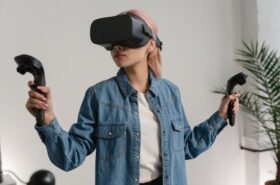What is VR
Virtual reality, or VR, is a computer-generated simulation of a three-dimensional image or environment that can be interacted with in a seemingly real or physical way by a person using special electronic equipment, such as a helmet with a screen inside or gloves fitted with sensors.
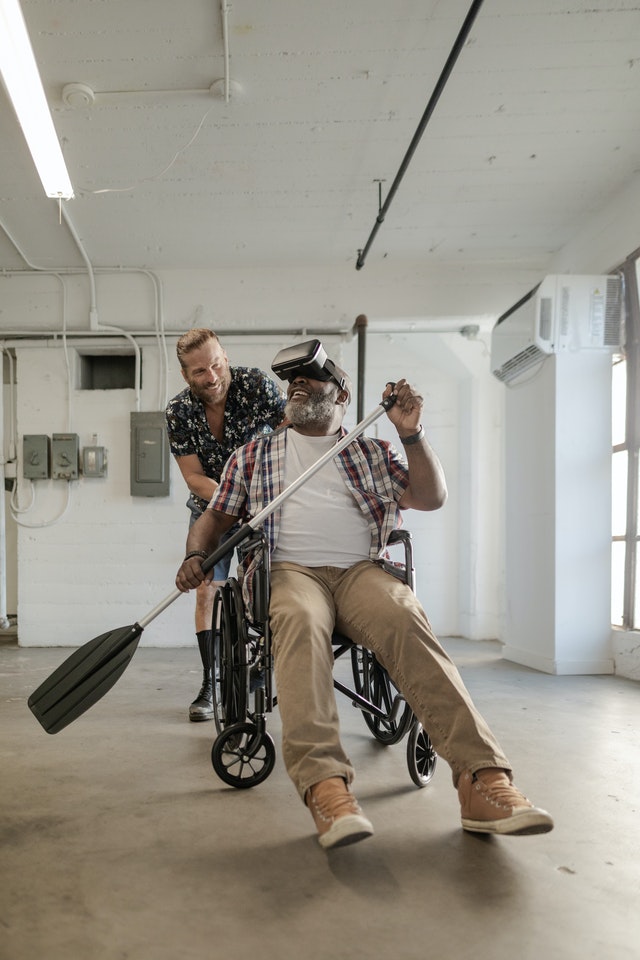
Who Invented Virtual reality? (A Brief History of VR)
The term “virtual reality” was first used in a science fiction story, “Pygmalion’s Spectacles”, written by Stanley G. Weinbaum in 1932. The story described a goggle-based VR system with holographic images that allowed users to interact with virtual objects.
However, the first VR technology to be created was the VR helmet, developed by Morton Heilig in 1960. The VR helmet was designed to provide users with a wide field of view and stereoscopic images, creating a sense of depth and immersion.
Heilig also created the Sensorama machine in 1962, which was designed to simulate realistic sensory experiences, such as smells and sounds.
In 1968, Ivan Sutherland created the Sword of Damocles, the first VR headset that was connected to a computer. The headset was large and bulky, and it was only capable of displaying simple wireframe images.
The VR industry began to take off in the 1990s with the development of more immersive VR headsets, such as the Virtuality VR system, which was released in 1991. VR systems began to be used in arcades and theme parks, and they also started to appear in home console gaming systems.
In the 2010s, VR technology has been developed for use in a variety of different fields, including education, healthcare, military training, and entertainment. VR is also being used to create simulated environments for research purposes.

How Does VR Work
The VR headset contains two small LCD screens that display images in stereoscopic 3D, and these images are fed to the user’s eyes via lenses. The lenses allow the user’s eyes to focus on the images at different depths, creating a sense of depth and immersion.
The VR headset is also fitted with sensors that track the user’s head movements. This allows the VR system to adjust the images on the screen to match the user’s line of sight, providing a more immersive experience.
Some VR systems also use haptic feedback, which is a sense of touch that is generated by the VR system. This can be used to provide users with a sense of realism when they are interacting with virtual objects.
The VR experience can be created using VR technology to make it appear as if the person is in a different place, or it can be simulated by the person’s imagination.
What are the 3 types of VR
There are three main types of VR system: non-immersive, semi-immersive, and fully immersive.
Non-immersive VR systems provide users with a limited field of view and do not completely block out the real world. Non-immersive VR systems are often used for training and simulation purposes.
Semi-immersive VR systems provide users with a wider field of view than non-immersive VR system, but they still allow the user to see the real world. Semi-immersive VR systems are often used for gaming and entertainment purposes.
Fully immersive VR systems provide users with a completely immersive experience by blocking out the real world. Fully immersive VR systems are often used for gaming, entertainment, and research purposes.

What Are The 3 Types Of VR Headsets
There are three main types of VR headset: tethered, standalone, and mobile.
Tethered VR headsets are connected to a computer or gaming console. This allows the VR system to provide high-quality visuals and audio. Tethered VR headsets are often used for gaming and entertainment purposes.
Standalone VR headsets are not connected to a computer or gaming console. They have their own built-in processors and display screens. Standalone VR headsets are often used for gaming, entertainment, and research purposes.
Mobile VR headsets are designed to be used with a smartphone. They use the processing power of the phone to provide VR experiences. Mobile VR headsets are often used for gaming, entertainment, and research purposes.
What are the 3 types of VR Input
There are three main types of VR input: controllers, gloves, and body tracking.
Controllers are handheld devices that allow users to interact with VR applications. They can be used to input commands, select objects, and navigation menus.
Gloves are wearable devices that have sensors that track the movements of the user’s hands. This allows users to interact with VR applications in a more natural way.
Body tracking is a VR input method that uses sensors to track the user’s body movements. This allows users to interact with VR applications in a more realistic way.
What Are The 5 Types of VR Display Screens
There are five main types of VR display screens: LCD, OLED, DLP, LED, and Plasma.
- LCD VR displays are made up of two layers of liquid crystal cells.
- OLED VR displays are made up of organic light-emitting diodes.
- DLP VR displays are made up of thousands of tiny mirrors.
- LED VR displays are made up of an array of light-emitting diodes.
- Plasma VR displays are made up of a gas that is electrically charged.
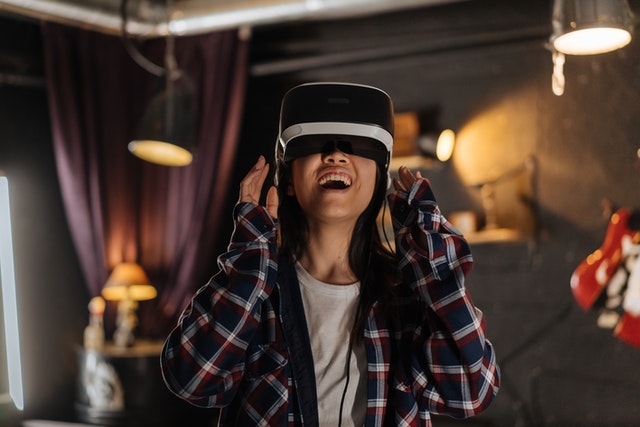
What is Haptic Feedback
Haptic feedback is the use of Touch to provide users with feedback about their interactions with VR applications. Haptic feedback can be used to simulate the feeling of touch, pressure, textures, and temperature.
What is VR Sickness And How Can You Prevent It
VR sickness is a condition that can occur when using VR headsets. VR sickness symptoms can include nausea, vomiting, and headaches. VR sickness is often caused by the mismatch between what the user sees and what the user’s body feels. VR sickness can be prevented by taking breaks, using comfortable VR headsets, and avoiding VR content that is known to cause VR sickness.
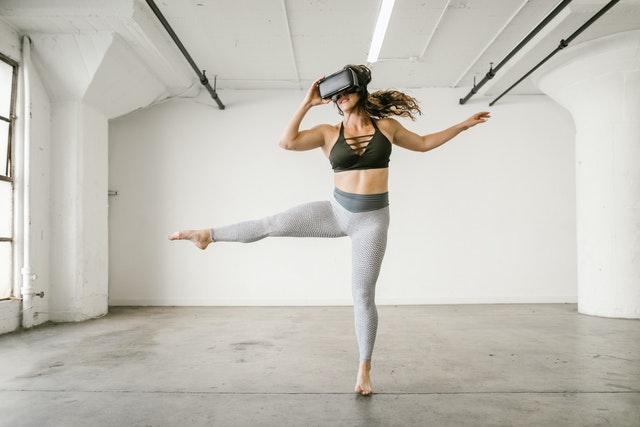
What Are The Advantages of VR?
There are many advantages of VR. VR can provide users with an immersive experience that is not possible with other forms of media. VR can also be used for gaming, entertainment, and research purposes. VR can also provide users with a sense of presence, which can make VR experiences more realistic and lifelike.
What Are The Disadvantages of VR?
There are also several disadvantages of VR. VR can cause VR sickness in some users. VR can also be expensive, and the cost of VR content can be prohibitive for some people. VR can also be isolating, as it can cut users off from the outside world. Finally, VR can give users a false sense of reality, which can lead to dangerous situations.

How Much Does VR Cost?
The cost of VR varies depending on the type of VR system. Tethered VR systems can cost anywhere from $400 to $800. Standalone VR systems can cost anywhere from $200 to $400. Mobile VR systems can cost anywhere from $100 to $300. The price of VR content also varies depending on the type of VR content. 2D VR content can cost anywhere from $0.99 to $9.99. 3D VR content can cost anywhere from $9.99 to $19.99. 360-degree VR content can cost anywhere from $19.99 to $29.99.
What Is The Easiest Way To Get Started With VR?
The easiest way to get started with VR is to purchase a VR headset. VR headsets are available for purchase online and in stores. VR headsets range in price from $100 to $800. Once you have a VR headset, you can download VR apps and games from the internet or from your VR headset’s app store.
When Will VR Become Affordable To the Global Public?
VR will become more affordable to the global public as VR technology becomes more advanced and accessible. VR headset prices are expected to drop as VR technology advances. In addition, VR content will become more affordable as VR content creators produce more VR content that is locally relevant to a broader audience. Content creators can also leverage existing content (composability) which means they are building content on top of existing content. This content extension builds much more rapidly than starting from new.

What Is Needed For VR To Get Mainstream Adoption?
VR will need to become more affordable and more accessible before it can achieve mainstream adoption. VR headsets need to be cheaper, and VR content needs to be more widely available. In addition, VR technology needs to continue to advance so that VR experiences are more realistic and immersive. VR also needs to offer a wider variety of apps that add real value to users i.e. that offer solutions for different use-cases.
How Is The Metaverse Linked To VR?
The Metaverse is a VR world that is created by humans and governed by human rules. The Metaverse is linked to VR because VR can be used to create and experience the Metaverse. VR can also be used to explore the Metaverse and interact with other users who are in the Metaverse. The Metaverse is also linked to VR because VR can be used to create and experience virtual worlds that are similar to the Metaverse.
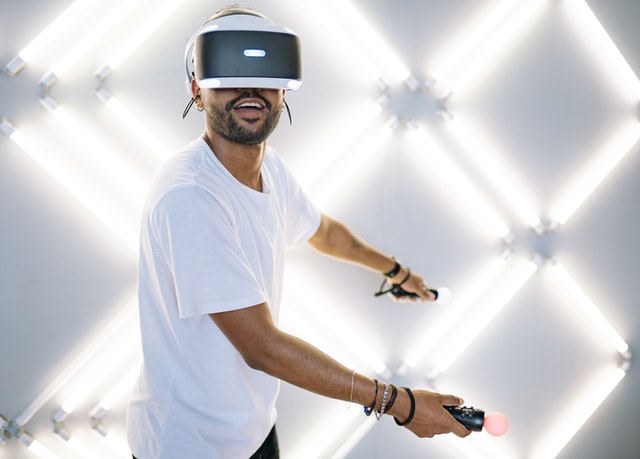
How Has The Technology For VR Headsets Improved?
The technology for VR headsets has improved significantly over the past few years. VR headset manufacturers have been able to reduce the size and weight of VR headsets. In addition, VR headset manufacturers have been able to improve the resolution and field of view of VR headsets. VR headset manufacturers have also been able to improve the audio quality of VR headsets.
What VR Headset Should I Buy?
There are many VR headsets on the market, and it can be difficult to choose the right VR headset for you. You should consider your budget, your needs, and your VR experience when choosing a VR headset. Some of the best VR headsets include the Oculus Rift, the HTC Vive, the Sony PlayStation VR, and the Samsung Gear VR.
How Will Future VR Work?
The future of VR is exciting and full of potential. VR headsets will become smaller and more powerful, VR tech will first be integrated into smaller glasses and then contact lenses.
With new VR technologies being developed every day, the possibilities for VR are endless. In the future, VR will become more realistic and immersive. VR experiences will become more interactive and allow users to interact with each other in new ways. VR will also become more accessible and affordable for the global public. The future of VR is bright, and it is sure to revolutionize the way we live, work, and play.

What Are The Benefits & Opportunities of VR
VR has many potential benefits, including:
– Enhancing the gaming experience
– Enriching the education experience
– Improving the healthcare experience
– Enhancing the video-watching experience
– Providing a new way to interact with friends and family
– Allowing people to explore new VR worlds
– Allowing businesses to create new VR products and services
– Allowing businesses to train employees using VR
– Helping people with mental health disorders
– Improving the quality of life for people with disabilities
What Are The Disadvantages & Risks of VR
VR also has some potential disadvantages, including:
– VR sickness
VR sickness is a condition that can occur when using VR headsets. VR sickness occurs when the brain is unable to process the visual input from the VR headset. VR sickness can cause nausea, vomiting, and dizziness. VR also has the potential to cause social isolation. Virtual.
– Social isolation
VR has the potential to cause social isolation. VR can provide an immersive experience that can make users feel disconnected from the real world. VR can also make it difficult for users to interact with other people in the real world.
– Virtual reality addiction
VR can also cause people to become addicted to VR experiences. VR addiction is a real phenomenon, and it is something that should be monitored. VR addiction can cause people to neglect their real-world responsibilities in favor of VR experiences.
– The risk of cybercrime
VR also opens up users to the risk of cybercrime. Cybercriminals can target VR users with phishing scams, malware, and other attacks. VR users should be aware of the risks of cybercrime and take steps to protect themselves.
– Eye strain
VR can also cause eye strain. VR headsets can put a lot of strain on your eyes, and this can lead to headaches, dizziness, and nausea. VR users should take breaks often to avoid eye strain.
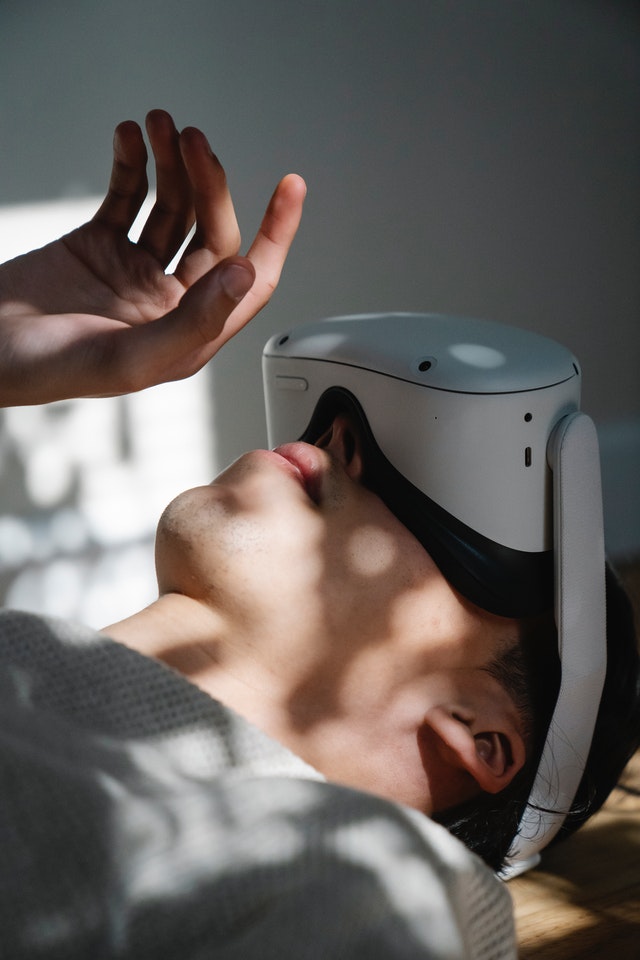
VR’s Best Use Cases
– Healthcare: VR can also be used to provide training for medical professionals. For example, VR can be used to explore inside the human body or surgeons can practice an operation in VR before perming it in real life.
– Education: VR can be used to provide engaging learning that can enhance the learning process by making learning fun. VR can also be used to create VR simulations that can be used for all different types of training.
– Business: VR can be used to create VR products and services. VR can also be used to train employees and help businesses with marketing and customer service. VR can be used to facilitate meetings in a detailed world, for example, engineers may want to have a virtual meeting inside an engine they are designing so that they can visually show what ety are talking about as they speak.
– Gaming: VR is more realistic than 2D games. VR adds a new level of immersive experience, which keeps gamers engaged. VR can also be used to create new types of games that are not possible in the real world.
– Entertainment: VR can be used to provide sensory experiences that can enhance entertainment. VR is useful when complemented by physical reality (like 4Dx movies, where your seat moves & they blow wind on your face etc).
– Social: VR can be used to provide new ways for people to interact with each other. VR can also be used to create virtual worlds that can be used for socializing and networking. These worlds also offer more variety & customizability, such as your own avatar.
– Travel: VR can be used to recreate physical travel experiences, this may help tourists choose between trips because they have better information. It also helps heritage sites raise money without having the physical damage of tourists being at the attraction. VR can also be used to create virtual tours of destinations that are not possible to visit in person. Through VR, a disabled person can now experience everything that an abled person can.
Conclusion
VR is amazing tech that has not only come a long way, but it is also about to explode in usefulness. The costs of VR headsets are dropping and the range of apps and use-cases is growing by the day. There is a massive new world of VR (literally) ahead. We’re excited about the possibilities, how can you benefit from VR?



